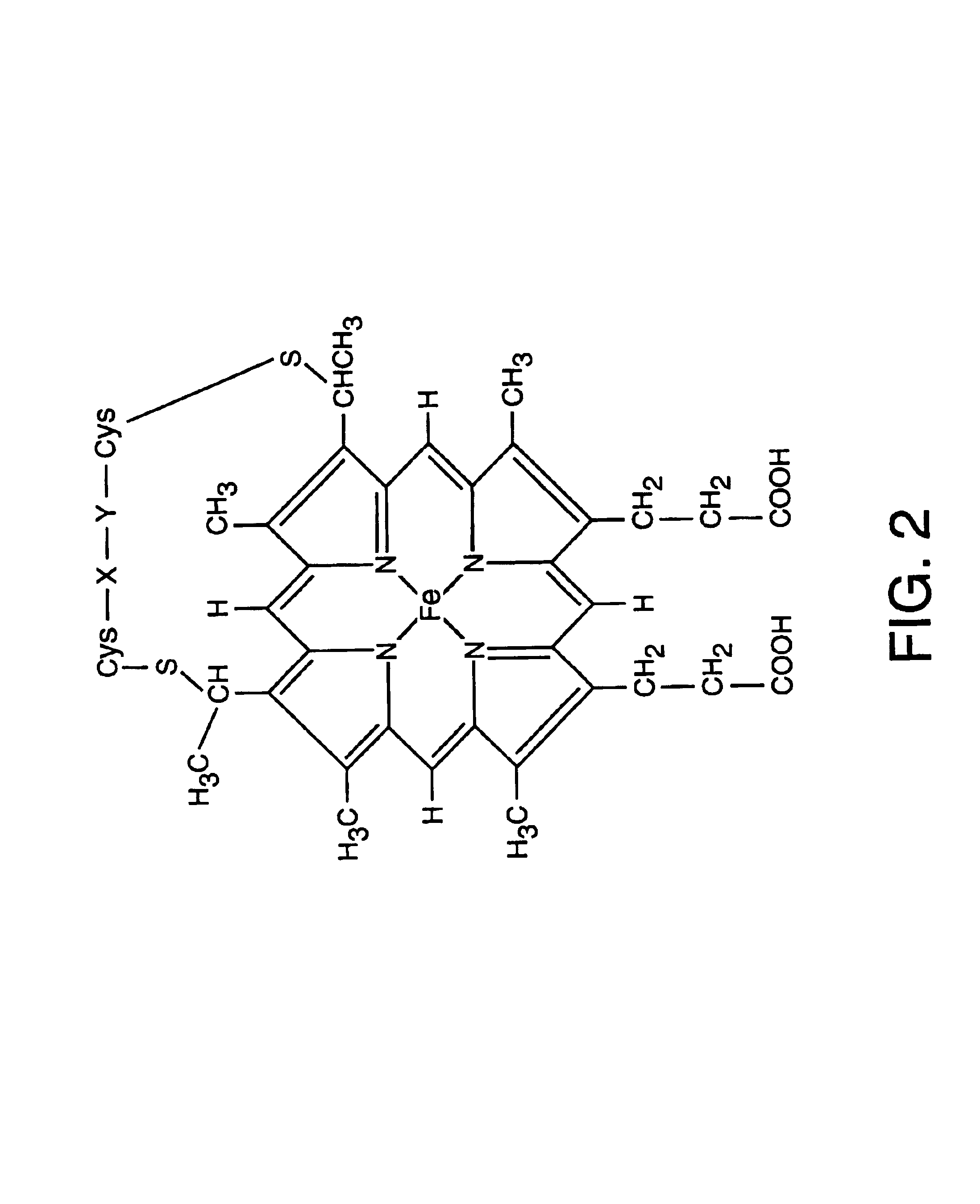Optical sensors for the detection of nitric oxide
a technology of optical sensors and nitric oxide, applied in the field of optical sensors, can solve the problems of difficult intracellular measurement, large size, difficult use for cellular nitric oxide measurement, etc., and achieve the effect of small size and good sensitivity
- Summary
- Abstract
- Description
- Claims
- Application Information
AI Technical Summary
Benefits of technology
Problems solved by technology
Method used
Image
Examples
example 1
[0125]In this example, sensors were prepared by silanizing a freshly cleaved multimedia fiber by immersing the distal end for two hours in 3-(mercatopropyl) trimethoxysilane, thereby modifying the fiber with reactive groups. The end was then rinsed copiously with methanol, then tripley distilled water. The silanized fiber was placed in colloidal gold (used as received from the manufacturer) for three hours, then rinsed with water. The sensor can be stored at this point in water or air.
[0126]Two protein solutions were prepared. The first solution was prepared by dissolving 0.1% r-phycoerythrin (Molecular Probes, Eugene, Oreg.) in phosphate buffer, pH 6.0. The fiber was then immersed in the protein solution for one hour, rinsed with buffer, then used.
[0127]A second protein solution was prepared by dissolving 0.1% bovine serum albumin (BSA) in phosphate buffer, pH 6.0. The fiber was then immersed in the protein solution for one hour, rinsed with buffer, then used. After BSA attachment,...
example 2
[0130]In this example, pulled sensors are described. Sub-micron sized fiber optic sensor were prepared by pulling multimedia fiber in a home-built puller consisting of a modified pipette-puller heated with a CO2 laser. The pulled tips were then silanized, coated with aluminum in a home-built evaporator and prepared with gold colloid and protein as above.
example 3
[0131]This example describes the first sensor to incorporate cytochrome c′. The heme group of this nitric oxide-binding protein is shown in FIG. 2. Cytchrome c′ was chosen as the chemical recognition element because it exhibits spectral changes upon binding nitric oxide and is highly selective. While a precise understanding of the mechanisms involved is not necessary for the practice of the invention, it is believed that, as the sixth ligand site of cytochrome c′ is buried within the protein, it is usually accessible only to carbon monoxide and nitric oxide. However, cytochrome c′ undergoes autoxidation to Fe(III), which binds nitric oxide, but not carbon monoxide.
[0132]To prepare the sensor, 100 μm core diameter multimedia fibers (General Fiber Optics, Cedar Grove, N.J.) or multimedia fibers were pulled to a submicrometer tip diameter and were silanized for 2 hrs in neat 3-mercaptopropyl-trimethoxy silane (Gelest, Inc., Tullytown, Pa.) in a well-ventilated fume hood. The fibers wer...
PUM
| Property | Measurement | Unit |
|---|---|---|
| response time | aaaaa | aaaaa |
| diameter | aaaaa | aaaaa |
| sizes | aaaaa | aaaaa |
Abstract
Description
Claims
Application Information
 Login to View More
Login to View More - R&D
- Intellectual Property
- Life Sciences
- Materials
- Tech Scout
- Unparalleled Data Quality
- Higher Quality Content
- 60% Fewer Hallucinations
Browse by: Latest US Patents, China's latest patents, Technical Efficacy Thesaurus, Application Domain, Technology Topic, Popular Technical Reports.
© 2025 PatSnap. All rights reserved.Legal|Privacy policy|Modern Slavery Act Transparency Statement|Sitemap|About US| Contact US: help@patsnap.com



